It looks like you're using an Ad Blocker.
Please white-list or disable AboveTopSecret.com in your ad-blocking tool.
Thank you.
Some features of ATS will be disabled while you continue to use an ad-blocker.
Self Evident. Proof of Twin Tower CD = Remote Controlled, Swapped-in, Military Drone Aircraft on 9/1
page: 33share:
LOOK.... without enough oil secured your way of american life goes by by. You want that? Well then stop complaining. Just say "ya i twas some nutty
ahrab" and be happy you can drive to the movies on a friday night with you gf ok.
where they cut off your ear if they don't like your face! .,.. It should say "where they cut off your dink if they don't like your face!..."
where they cut off your ear if they don't like your face! .,.. It should say "where they cut off your dink if they don't like your face!..."
edit on 19-12-2013 by spartacus699 because: (no reason given)
reply to post by NewAgeMan
The buildings did not fall faster than free fall. The debris outside the main collapse is falling faster than the collapse. That in its self is proof that the building, on average fell slower than a object dropped in free fall from the same high.
I don't believe David Chandler or or anyone associated with A&E is a reliable source of facts.
The buildings did not fall faster than free fall. The debris outside the main collapse is falling faster than the collapse. That in its self is proof that the building, on average fell slower than a object dropped in free fall from the same high.
I don't believe David Chandler or or anyone associated with A&E is a reliable source of facts.
reply to post by huh2142
He told you just to LOOK with your own eyes, what do you really see?
It's self evident.
Furthermore, this talk about the debris fountain, you don't get it.
It's a steel vs. air scenario, or nothing, vs. the path of maximal resistance, through a steel structure, in the case of the North Tower, 95 floors worth, so as far as the comparison goes, that knocks a second off free fall right there, instead of a free fall from 110 stories, meaning that the only difference between a fall through nothing (but air) and one through steel, is about three or four seconds, that's it.
Therefore, that's the only remaining time difference within which every single weld and join and bolt would need to fail, for the ENTIRE REMAINING STRUCTURE, all the way to the ground.
One, two, three, four.
Everyone knows that an object in motion will tend to remain in motion unless it encounters a force of resistance and that for every action there is an equal and opposite reaction, so - one, two, three, four over absolute free fall through nothing at all (except air), does not allow enough time for every weld and joint to fail, or to break apart, absent the foot of God, or explosives, as SEEN.
Furthermore half way through the descending debris wave at near absolute free fall, for a length of 95 stories, the smallest fraction of a second per story, half way down there was considerably less building above the remaining length of structure, but down the exploding material went, all the way to the ground, without any loss of momentum and if anything even accelerating as the center of the mass of the building imploded so fast material was ejected on up upward arc. It's near free fall, to within seconds and fractions of seconds, to a max of 4-6 over absolute free fall in nothing but air, which from the very height of the buildings, in nothing but air is just over 10 seconds to 10.5 seconds depending on the size and the shape of the object, whether an anvil, a penny, a steel safe or a grand piano .
People looking back on this thing, beyond the experiencing generation many of whom (just over half) were duped by the whole affair of planes into buildings, fire, "collapse" and the exclamation - we were attacked! - MOST everyone will look back on it and play the videos and go "holy # WTF!?"
It will become self evident that the buildings did not "collapse" due to the plane impacts and fire at around the impact level, and if CD is at work, which is self-evident, in the final analysis, looking back through the rear-view mirror of damn near 20/20 hindsight - then what about those planes. When we play the tape back through the self evident proof of CD, everything becomes suspect, including and perhaps especially the south tower plane, so what do we really SEE there, in that case.
Oh yes you'll talk about weight loading etc. as if what ensued thereafter need not be really examined, as nothing but an "inevitable" consequence of a collapse initiation hypothesis, as per NIST, but note the way they actually blew up and went down yes to within seconds of free fall (i never said faster than freefall I don't know where you got that) - whereby the second tower, although hit second, but lower down, goes down first, with a tipping block dramatically falling into the core of debris ejection/implosion - with the other one, the one hit higher up, doing the exact same thing a half hour LATER. It's all too obvious in light of CD evidence, what they did and it points to remotely piloted modified drone aircraft, most certainly in the case of the south tower plane, coinciding strangely with those upgrades by Turner Construction, particularly in the case of the South Tower where the whole impact range of floors was covered, in the north, just the lower threshold with a couple of rings above that point - as per the 2nd piece of information introduced in the OP of this thread.
He told you just to LOOK with your own eyes, what do you really see?
It's self evident.
Furthermore, this talk about the debris fountain, you don't get it.
It's a steel vs. air scenario, or nothing, vs. the path of maximal resistance, through a steel structure, in the case of the North Tower, 95 floors worth, so as far as the comparison goes, that knocks a second off free fall right there, instead of a free fall from 110 stories, meaning that the only difference between a fall through nothing (but air) and one through steel, is about three or four seconds, that's it.
Therefore, that's the only remaining time difference within which every single weld and join and bolt would need to fail, for the ENTIRE REMAINING STRUCTURE, all the way to the ground.
One, two, three, four.
Everyone knows that an object in motion will tend to remain in motion unless it encounters a force of resistance and that for every action there is an equal and opposite reaction, so - one, two, three, four over absolute free fall through nothing at all (except air), does not allow enough time for every weld and joint to fail, or to break apart, absent the foot of God, or explosives, as SEEN.
Furthermore half way through the descending debris wave at near absolute free fall, for a length of 95 stories, the smallest fraction of a second per story, half way down there was considerably less building above the remaining length of structure, but down the exploding material went, all the way to the ground, without any loss of momentum and if anything even accelerating as the center of the mass of the building imploded so fast material was ejected on up upward arc. It's near free fall, to within seconds and fractions of seconds, to a max of 4-6 over absolute free fall in nothing but air, which from the very height of the buildings, in nothing but air is just over 10 seconds to 10.5 seconds depending on the size and the shape of the object, whether an anvil, a penny, a steel safe or a grand piano .
People looking back on this thing, beyond the experiencing generation many of whom (just over half) were duped by the whole affair of planes into buildings, fire, "collapse" and the exclamation - we were attacked! - MOST everyone will look back on it and play the videos and go "holy # WTF!?"
It will become self evident that the buildings did not "collapse" due to the plane impacts and fire at around the impact level, and if CD is at work, which is self-evident, in the final analysis, looking back through the rear-view mirror of damn near 20/20 hindsight - then what about those planes. When we play the tape back through the self evident proof of CD, everything becomes suspect, including and perhaps especially the south tower plane, so what do we really SEE there, in that case.
Oh yes you'll talk about weight loading etc. as if what ensued thereafter need not be really examined, as nothing but an "inevitable" consequence of a collapse initiation hypothesis, as per NIST, but note the way they actually blew up and went down yes to within seconds of free fall (i never said faster than freefall I don't know where you got that) - whereby the second tower, although hit second, but lower down, goes down first, with a tipping block dramatically falling into the core of debris ejection/implosion - with the other one, the one hit higher up, doing the exact same thing a half hour LATER. It's all too obvious in light of CD evidence, what they did and it points to remotely piloted modified drone aircraft, most certainly in the case of the south tower plane, coinciding strangely with those upgrades by Turner Construction, particularly in the case of the South Tower where the whole impact range of floors was covered, in the north, just the lower threshold with a couple of rings above that point - as per the 2nd piece of information introduced in the OP of this thread.
_BoneZ_
Kevin Ryan, formerly of Underwriters Laboratories (UL) (Edit by NAM: who was fired for asking questions about the steel he was involved in testing and certifying as it related to the twin towers), made a post back in January of 2008 at 9/11 Blogger showing that the floors of the WTC that had the fire-proofing upgraded, matched almost exactly to the floors that were impacted and failed in both towers:
[atsimg]http://files.abovetopsecret.com/images/member/f2896139143b.jpg[/atsimg]
www.911blogger.com...
It now turns out the company that did those upgrades is Turner Construction company.
i224.photobucket.com...
Turner Construction Company also helped plan and oversee the demolition of the Seattle Kingdome in 2000:
seattlepi.nwsource.com...
www.stadium.org...
Turner Construction Company also occupied the 38th floor of WTC 1:
en.wikipedia.org...
Turner Construction Company particpated in the collection and disposal of the steel wreckage of the WTC towers following September 11, 2001:
en.wikipedia.org...
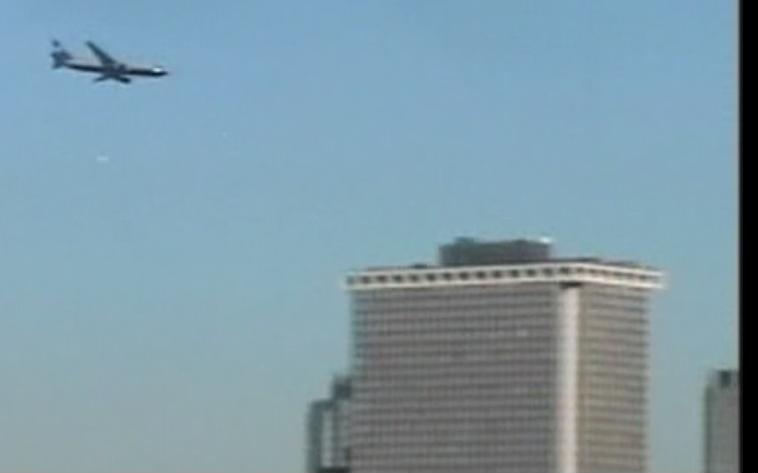
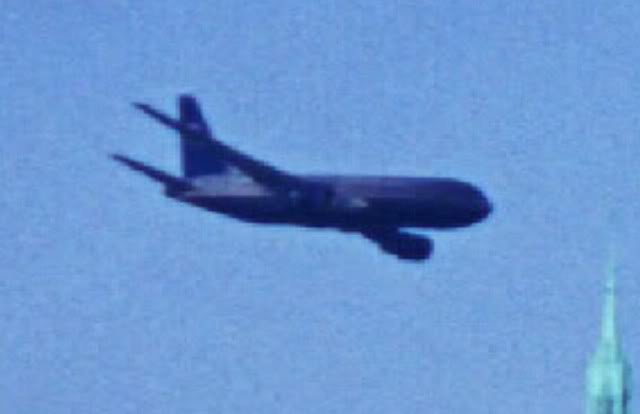
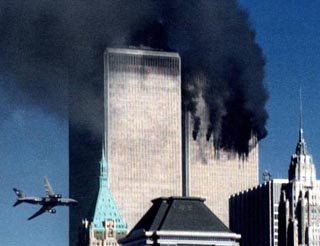

Plane sure looks more like a 300, than a 767-200 (222), to me..
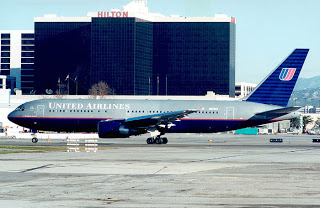
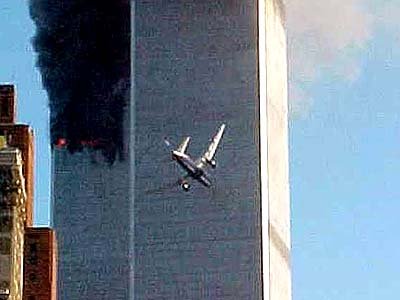
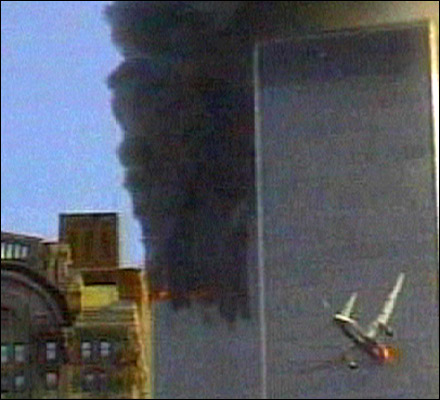
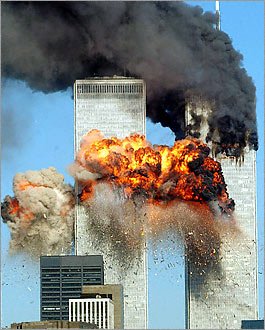
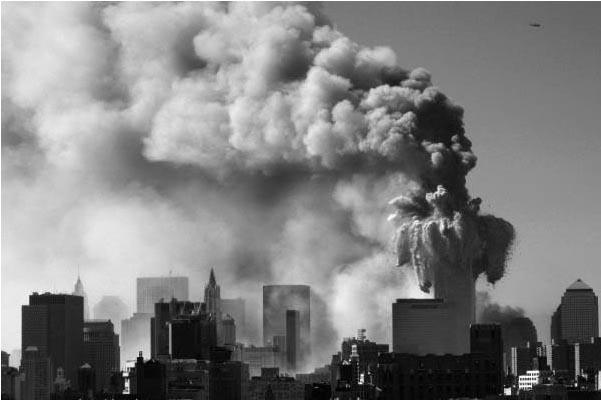
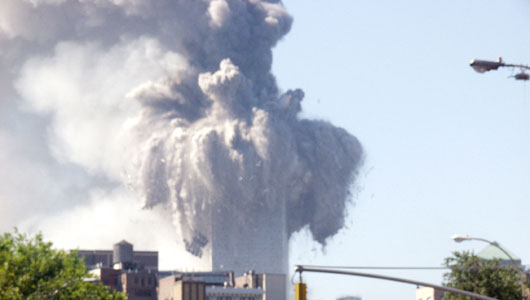
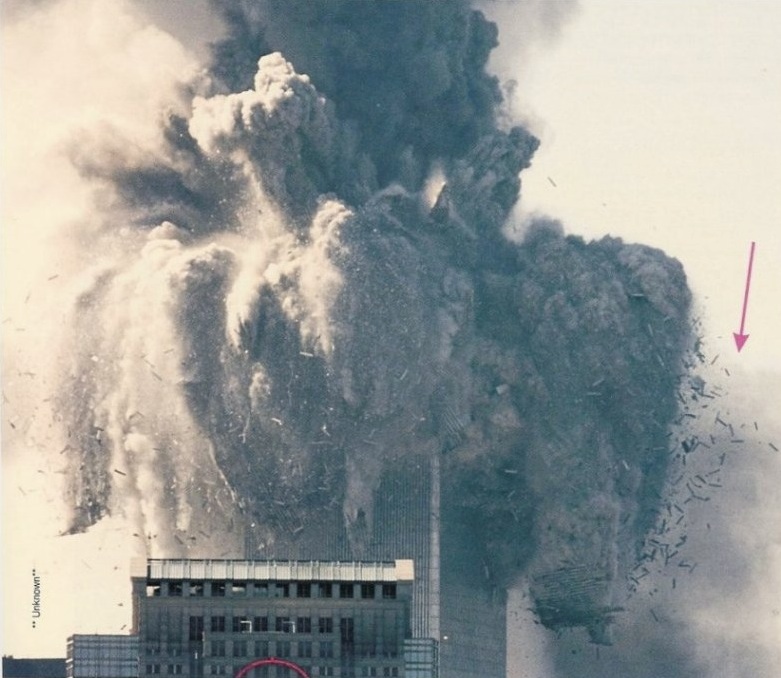
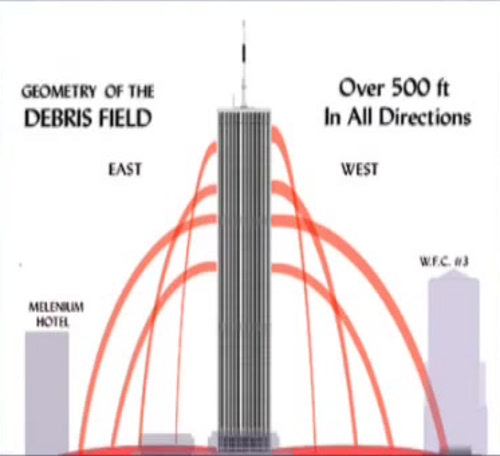
edit on 20-12-2013 by NewAgeMan because: what else is there to say? It speaks for itself.
North Tower - Top Block
Let's look at two aspects with regards to the destruction of the WTC North Tower, in regards to the top block, first in terms of it's acceleration curve and then second, in regards to it's complete destruction and pulverization even as the debris wave begins it's near free fall descent, all the way down the remaining 95 stories of the building structure and through the path of maximal resistance. There wasn't even a "jolt", nothing, just freeform acceleration amid what can only be described as blowing up, and being already pulverized before it even has a chance to exert any downward force on the remaining structure, which itself then basically proceeded to blow up, imploding and exploding in a cascading, and explosively outwardly ejecting debris wave, which then proceeded all the way down the remaining length of structure all 95 stories worth, all the way to the ground without any appreciable loss of momentum and to within about 4-6 seconds of absolute free fall in nothing but air (10. something seconds with air resistance for free fall time), a second less if the free fall count is begun at the 95th floor. Absent the foot of God, or the use of explosives, it's utterly impossible and absurd .
People are going to notice this, looking back on the early history of the 21st century, and they're going to go, "WTF?!!!" and then eventually, as the line of inquiry extends itself logically, to the plane on approach to impact at 510 knots + (+ being about 515, factoring in the light wind vector), an equivalent airspeed or EAS of 1.19 Mach at 22,000 feet, 1.38 at 35,000 feet, and 1.39-1.4 at 38,000 feet, and there, once again, or here and now (whenever they read this or discover it elsewhere) the same thing will occur to them. "WTF?!!!!" (sorry for swearing, but that's what future history will say looking back on the 1st decade of the 21st century, looking back through the history right to the 9/11 event itself as the first cause in the whole monstrous mess and utter fisaco, and in the final analysis, abysmal FAILure, there's simply no getting around it.)
Let's look at two aspects with regards to the destruction of the WTC North Tower, in regards to the top block, first in terms of it's acceleration curve and then second, in regards to it's complete destruction and pulverization even as the debris wave begins it's near free fall descent, all the way down the remaining 95 stories of the building structure and through the path of maximal resistance. There wasn't even a "jolt", nothing, just freeform acceleration amid what can only be described as blowing up, and being already pulverized before it even has a chance to exert any downward force on the remaining structure, which itself then basically proceeded to blow up, imploding and exploding in a cascading, and explosively outwardly ejecting debris wave, which then proceeded all the way down the remaining length of structure all 95 stories worth, all the way to the ground without any appreciable loss of momentum and to within about 4-6 seconds of absolute free fall in nothing but air (10. something seconds with air resistance for free fall time), a second less if the free fall count is begun at the 95th floor. Absent the foot of God, or the use of explosives, it's utterly impossible and absurd .
People are going to notice this, looking back on the early history of the 21st century, and they're going to go, "WTF?!!!" and then eventually, as the line of inquiry extends itself logically, to the plane on approach to impact at 510 knots + (+ being about 515, factoring in the light wind vector), an equivalent airspeed or EAS of 1.19 Mach at 22,000 feet, 1.38 at 35,000 feet, and 1.39-1.4 at 38,000 feet, and there, once again, or here and now (whenever they read this or discover it elsewhere) the same thing will occur to them. "WTF?!!!!" (sorry for swearing, but that's what future history will say looking back on the 1st decade of the 21st century, looking back through the history right to the 9/11 event itself as the first cause in the whole monstrous mess and utter fisaco, and in the final analysis, abysmal FAILure, there's simply no getting around it.)
edit on 20-12-2013 by NewAgeMan because: (every reason given)
Zaphod58
reply to post by OneFreeMan
So they faked the Empire State Builidng too in the 1940s? Because a much smaller plane had debris go all the way through the building. So how is it that a B-25 can do that to a concrete building at low speed, but a high speed plane, that's over 5 times heavier when empty, can't go into a steel building?
Because the steel frameworks are what would punch the hole in the PLANE, they are smaller in circumference.
It could certainly puncture the empty space, but the steel would puncture the larger weaker, PLANE.
SkepticOverlord
NewAgeMan
Why do you think the "static discharge" emitted from that point along the lower right fuselage, to the right of and well back from, the nose of the aircraft? Would it not jump from the closest point, which would be the nose itself?
The stills and videos you're using are of such horrendously low quality -- multi-generational digitally compressed YouTube videos -- that no determination of accuracy can be made.
In 2001, it was common for source video to be 15 frames-per second (or less) when converted to digital. A great deal can happen in real-world speed in the 1/15th of a second between those frames.
It's absolute misinformed short-sighted absurd inane madness to rely on these YouTube videos, with no indication of provenance, for anything that resembles proof of anything other than, "yup, that's a YouTube video."
Seriously. Anyone with genuine earnestness on these matters would seek out the original footage.
The original footage looks exactly the same sir, the provenance and amazing emotional response is indeed interesting, along with such amazing claims that 15 frames per second 100,000 dollar news cameras are too blame for actually capturing VERY WELL, a plane diving at 600 mph from some blocks away.
Quite an amazing claim nonetheless!!
Zaphod58
reply to post by randyvs
Have you ever looked at the tensile strength of aircraft aluminum? Obviously not. It's stronger than steel.
A36 steel, which made up at least part of the WTC structure.
Mechanical Properties
Mechanical Properties Metric Imperial
Tensile Strength, Ultimate 400 - 550 MPa 58000 - 79800 psi
Tensile Strength, Yield 250 MPa 36300 psi
Elongation at Break (in 200 mm) 20.0 % 20.0 %
Elongation at Break (in 50 mm) 23.0 % 23.0 %
Modulus of Elasticity 200 GPa 29000 ksi
Bulk Modulus (typical for steel) 140 GPa 20300 ksi
Poissons Ratio 0.260 0.260
Shear Modulus 79.3 GPa 11500 ksi
www.azom.com...
7075 aluminum, which is used in aircraft.
Ultimate Tensile Strength 572 MPa 83000 psi AA; Typical
Tensile Yield Strength 503 MPa 73000 psi AA; Typical
Elongation at Break 11 % 11 % AA; Typical; 1/16 in. (1.6 mm) Thickness
Elongation at Break 11 % 11 % AA; Typical; 1/2 in. (12.7 mm) Diameter
Modulus of Elasticity 71.7 GPa 10400 ksi AA; Typical; Average of tension and compression. Compression modulus is about 2% greater than tensile modulus.
Shear Modulus 26.9 GPa 3900 ksi
Shear Strength 331 MPa 48000 psi AA; Typical
asm.matweb.com...
The ultimate tensile strength of the aluminum is almost 4000 psi higher than the steel.
I'm still waiting to hear how a B-25, a full 4 1/2 times LIGHTER than an EMPTY 767 when fully loaded, went all the way through a building, but a fully loaded 767 couldn't. Please. Explain that to me.
This deserves to be quoted for its irony, but WHAT 767 came through the building ??
Surely you are not being serious here, but perhaps you could address this wild claim, sorry I am getting to this most amusing thread so late.
wmd_2008
reply to post by NewAgeMan
YOU don't understand the LOADS that the structure was under at the time or the DYNAMIC LOAD imposed on the lower structure as it fell I will give you an example which may help.
Lets look at a 10kg object falling the the height of a WTC floor approx 4mts
Use this link Impact Calculator
Impact energy just before it touches the floor below 392J of energy.
The next part is the hardest as the structure below DIDN'T/COULDN'T resit the load lets work it out if it just manage to.
The floor trusses were supported on cleats (angle iron) welded at the core side to a channel welded to the core columns and also to the wall columns.
Truss image below
911review.org...
There are images showing cleats sheared off so the weld failed and some of the top part of the cleat sheared off.
This cleat was about 1" (25.4mm) thick lest say that stops our dropping load just at the point it's about to shear so 25.4mm or 0.0254 mtr put that in the calculator above.
That gives a figure of 15433 n now dived that by 9.81 to convert to kg and that is 1573kg or 1.5 tons of impact energy.
The floors FAILED as the falling load hit them so that's why I made the assumption if they did stop they didn't so whats your take on that.
This is just to illustrate the HUGE loads generated in such a situation we can NEVER know the exact details of the impact events we can only see the result.
In fact here is a link to calculations of force on a driver in a crash.
Force on driver in a car crash
DON'T drive to close eh!!!
What we DO understand is that you are saying that science, the same science used to build these towers, and the engineers responsible, built around the same time that "supposedly" the same physics, all these things sent someone to the moon, figured out how to split atoms, was just a whole massive lie ??
reply to post by ParasuvO
No what I am saying is that many people that post here in these forums about 9/11 that have NO knowledge of construction or PRACTICAL experience DON'T understand what happened during the collapse this is not simple 2 mass collisions it was a chaotic collapse.
The loads and energy generated was massive have YOU ever tested structural components to DESTRUCTION have YOU spent 30+ years working in the construction industry.
It's OBVIOUS you don't understand high speed impacts and the energy they produce.
The DYNAMIC loads ARE the result of physics in the real world.
Here is a video of a water jet cutter it can cut everything from rubber to ceramics to the hardest metals
water with fine grit SO how would that work in YOUR world because using your understanding it wouldn't.
It cuts the material due to the EXTREME PRESSURE AND SPEED that the water & fine grit are under hit the object at the wrong speed wrong pressure and it doesn't cut.
It's simple UNLESS you really know something about a subject you can jump to the wrong conclusions you see that all to often here with many forums!!!!
No what I am saying is that many people that post here in these forums about 9/11 that have NO knowledge of construction or PRACTICAL experience DON'T understand what happened during the collapse this is not simple 2 mass collisions it was a chaotic collapse.
The loads and energy generated was massive have YOU ever tested structural components to DESTRUCTION have YOU spent 30+ years working in the construction industry.
It's OBVIOUS you don't understand high speed impacts and the energy they produce.
The DYNAMIC loads ARE the result of physics in the real world.
Here is a video of a water jet cutter it can cut everything from rubber to ceramics to the hardest metals
water with fine grit SO how would that work in YOUR world because using your understanding it wouldn't.
It cuts the material due to the EXTREME PRESSURE AND SPEED that the water & fine grit are under hit the object at the wrong speed wrong pressure and it doesn't cut.
It's simple UNLESS you really know something about a subject you can jump to the wrong conclusions you see that all to often here with many forums!!!!
reply to post by wmd_2008
You would be well served to watch the videos presented in the two posts above. Use the North Tower as the primary example, since it involves the destruction of the longest section of building structure, from about the 95th floor. If you think you can reconcile it with the laws of physics, with a time difference between a free fall through nothing (but air) and the destruction along the axis of the path of maximal resistance, being only about 4-6 seconds, well then, is there anything that you would NOT believe?
This isn't about the need to be right to make someone else wrong, this is about truth and reality, which requires an open mind free from any sort of bias or contempt, prior to investigation, or re-investigation. Sometimes, based on new information we are compelled to change our minds, and not stick to our original premise no matter what the cost.
You would be well served to watch the videos presented in the two posts above. Use the North Tower as the primary example, since it involves the destruction of the longest section of building structure, from about the 95th floor. If you think you can reconcile it with the laws of physics, with a time difference between a free fall through nothing (but air) and the destruction along the axis of the path of maximal resistance, being only about 4-6 seconds, well then, is there anything that you would NOT believe?
This isn't about the need to be right to make someone else wrong, this is about truth and reality, which requires an open mind free from any sort of bias or contempt, prior to investigation, or re-investigation. Sometimes, based on new information we are compelled to change our minds, and not stick to our original premise no matter what the cost.
edit on 22-12-2013 by NewAgeMan because: (no reason given)
reply to post by wmd_2008
And I am saying that you are telling me that the engineers of the towers are liars.
I am saying that the towers fell and no way of proving it is like the OS says it is, can ever be TRULY vetted.
I am saying that it is all smoke and mirrors arguments, where the bully and historian is in charge of the debate, all of the time.
I am saying that a great deal of the entire issue, down to every mathematical sequence, was analyzed by people who are compromised on a deep subconscious level, to fit the theories to the CONCLUSION given to them.
I find that usually people who are unaware of the unhealthiness of their own situation, will fight and strive for themselves to stay in the dark, and it gives them pleasure to no end to try and make those who they KNOW can see things on a higher level, WITHOUT ANY SCHOOLING, feel they are powerless.
This thread is proof that more change is coming...
And I am saying that you are telling me that the engineers of the towers are liars.
I am saying that the towers fell and no way of proving it is like the OS says it is, can ever be TRULY vetted.
I am saying that it is all smoke and mirrors arguments, where the bully and historian is in charge of the debate, all of the time.
I am saying that a great deal of the entire issue, down to every mathematical sequence, was analyzed by people who are compromised on a deep subconscious level, to fit the theories to the CONCLUSION given to them.
I find that usually people who are unaware of the unhealthiness of their own situation, will fight and strive for themselves to stay in the dark, and it gives them pleasure to no end to try and make those who they KNOW can see things on a higher level, WITHOUT ANY SCHOOLING, feel they are powerless.
This thread is proof that more change is coming...
reply to post by NewAgeMan
It is so true about the planes, we are being required to believe that it "could have" happened , therefore it is like an NFL ruling, "not enough evidence to overturn the call" even though EVERYONE really knows the wrong call is, and was being made.
Every part of that day had incredible effect on my life and my circle, we know now that without it our "awakening" would not have been so sweet.
NAM aka Bob this thread has been remarkable in your perseverance, and has even surprised me in the perfect way.
Your super-smoothie recipe is so good, it makes me very glad I have begun consuming it...(this will never stop).
Putting this in the hoax bin and reading the rant from skeptic overlord was hair-raising in its vindictive overtures that people DARE to question the most romanticized painful moments that enslave us all.
This one thread, has given the green light !!!
Bravo!
It is so true about the planes, we are being required to believe that it "could have" happened , therefore it is like an NFL ruling, "not enough evidence to overturn the call" even though EVERYONE really knows the wrong call is, and was being made.
Every part of that day had incredible effect on my life and my circle, we know now that without it our "awakening" would not have been so sweet.
NAM aka Bob this thread has been remarkable in your perseverance, and has even surprised me in the perfect way.
Your super-smoothie recipe is so good, it makes me very glad I have begun consuming it...(this will never stop).
Putting this in the hoax bin and reading the rant from skeptic overlord was hair-raising in its vindictive overtures that people DARE to question the most romanticized painful moments that enslave us all.
This one thread, has given the green light !!!
Bravo!
reply to post by ParasuvO
Ah you're welcome, that's hilarious - astonishing, synchronistic even.
Someone else has found the joy in the truth on the other side of all the sorrow and suffering, to know that my energies here were never wasted. Awesome, that's what it's all about.
9/11 truth is empowering in a transcendent way in so far as it gives us the permission and the right to step right through the cleft in the wall of Zelikow's universe straight into the real world, and thus relative to the whole of it all with 9/11 fully grokked and shared.
This thread isn't finished though it's a work in progress like we are, and there's no telling what might accumulate here. That it's in the "hoax bin" here at ATS doesn't seem to detract one iota from it's credibility in the final analysis, so no worries about that, provided people can easily access the info unto.. epiphany.
To know in advance that that historical fulcrum has been removed from "their" hands, the likes of Zelikow, is to already find one's self participating in a great victory at some level, when the back of the Big Lie is finally broken at last.
There's almost a cheer that goes up in heaven and if there's also a groan in the midst of the triumph, then so be it!
You grok, not just the event, but the outward historical implications and significance even as it relates to you as an authentic historical participant and causal agent of progressive change for the better and for our mutual, enlightened best interest, which is the only thing that makes any sense.
"The more that sorrow and suffering has carved into our being the more joy we can contain."
` Khalil Gibran
"That which hurts, also instructs."
~ Benjamin Franklin
"It was the stone that was rejected by the builders that became the keystone."
~ Jesus Christ, who also said
"I ask for mercy, not sacrifice."
Ah you're welcome, that's hilarious - astonishing, synchronistic even.
Someone else has found the joy in the truth on the other side of all the sorrow and suffering, to know that my energies here were never wasted. Awesome, that's what it's all about.
9/11 truth is empowering in a transcendent way in so far as it gives us the permission and the right to step right through the cleft in the wall of Zelikow's universe straight into the real world, and thus relative to the whole of it all with 9/11 fully grokked and shared.
This thread isn't finished though it's a work in progress like we are, and there's no telling what might accumulate here. That it's in the "hoax bin" here at ATS doesn't seem to detract one iota from it's credibility in the final analysis, so no worries about that, provided people can easily access the info unto.. epiphany.
To know in advance that that historical fulcrum has been removed from "their" hands, the likes of Zelikow, is to already find one's self participating in a great victory at some level, when the back of the Big Lie is finally broken at last.
There's almost a cheer that goes up in heaven and if there's also a groan in the midst of the triumph, then so be it!
You grok, not just the event, but the outward historical implications and significance even as it relates to you as an authentic historical participant and causal agent of progressive change for the better and for our mutual, enlightened best interest, which is the only thing that makes any sense.
"The more that sorrow and suffering has carved into our being the more joy we can contain."
` Khalil Gibran
"That which hurts, also instructs."
~ Benjamin Franklin
"It was the stone that was rejected by the builders that became the keystone."
~ Jesus Christ, who also said
"I ask for mercy, not sacrifice."
Nvm. Just not worth it.
edit on 12/22/2013 by Zaphod58 because: (no reason given)
reply to post by NewAgeMan
You like many others that just cant get your head round why the collpase actually happened keep refering to collapsing through the path of strongest resisitance but there is a problem with that,
You are no doubt refering to the fact that the colums of the core and wall have a larger section lower down the building while its true the floorslabs dont!!!!!!
ALL repeat ALL of the floorslabs have the same design and are held in place using the same method be it the 101 st or 22nd, the only exception was the service floors they held various plant and equipment required in the building.
You can see the service floors in this picture it looks like a band round the buildings.
www.twintowers-newyork.com...
The floors were held in place by the truss system the trusses were support at the core wall and the outer walls by angle cleats you can see in this picture.
www.debunking911.com...
ANY FALLING MASS which landed on a floorslab COULD ONLY be supported by thoses cleats, they did not get larger further down, the floorslab trusses you can see in the picture above did not get larger further down it's that simple.
Once the collapse started the building literaly peeled itself apart.
There are picture were you see the cleats sheared or the bolts that held the truss sheared I gave a link in an earlier post so YOU & others like you could mess around with possible loads generated by the impacts, I BET YOU didn't even bother.
You like many others that just cant get your head round why the collpase actually happened keep refering to collapsing through the path of strongest resisitance but there is a problem with that,
You are no doubt refering to the fact that the colums of the core and wall have a larger section lower down the building while its true the floorslabs dont!!!!!!
ALL repeat ALL of the floorslabs have the same design and are held in place using the same method be it the 101 st or 22nd, the only exception was the service floors they held various plant and equipment required in the building.
You can see the service floors in this picture it looks like a band round the buildings.
www.twintowers-newyork.com...
The floors were held in place by the truss system the trusses were support at the core wall and the outer walls by angle cleats you can see in this picture.
www.debunking911.com...
ANY FALLING MASS which landed on a floorslab COULD ONLY be supported by thoses cleats, they did not get larger further down, the floorslab trusses you can see in the picture above did not get larger further down it's that simple.
Once the collapse started the building literaly peeled itself apart.
There are picture were you see the cleats sheared or the bolts that held the truss sheared I gave a link in an earlier post so YOU & others like you could mess around with possible loads generated by the impacts, I BET YOU didn't even bother.
reply to post by wmd_2008
See the tiny little ship way down below?
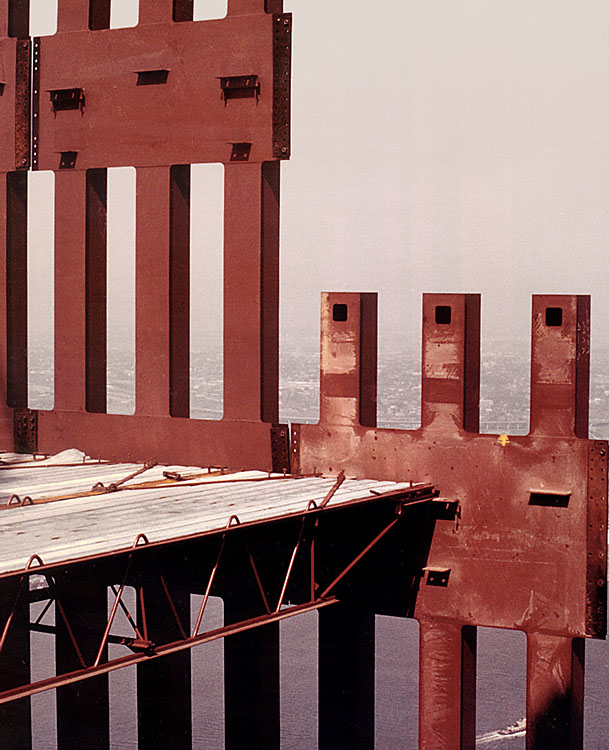
i offer that image and this one from the OP to demonstrate the point being made in previous posts and videos, regard the actual occurence of the destruction of the buildings relative to the time of absolute free fall from the same height in nothing but air, a difference, as i've pointed out already, of only about 4-6 seconds in the case of the north tower representing almost the entire length of structure from about the 95th floor, in an explosively ejecting debris wave consisting of a large portion of the mass of the building, yet when half way through (see images posted about), continuing, all the way to the ground, without any loss and even an increase in momentum.
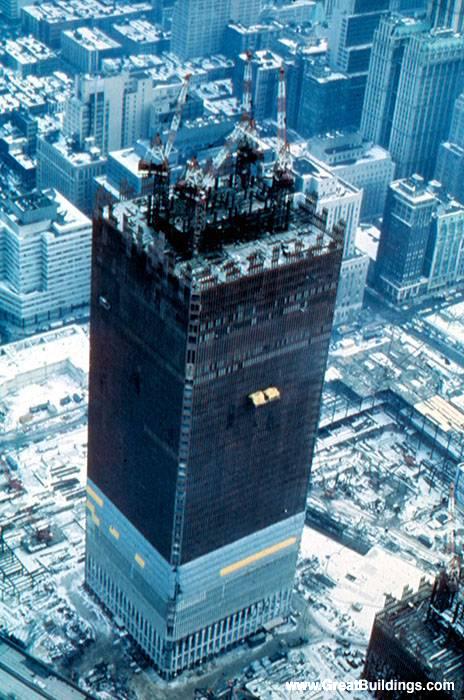
Also, please SEE videos already posted showing the actual destruction of the buildings while running this little thought experiment, and look again at the construction, and then compare again - air vs. steel, from top to bottom - 4-6 seconds, difference.
Absent the use of explosives, or the foot of God, the official story cannot be believed not in light of what actually took place, which wasn't any sort of progressive pancake "collapse", at all.
It's self evident.
See the tiny little ship way down below?

i offer that image and this one from the OP to demonstrate the point being made in previous posts and videos, regard the actual occurence of the destruction of the buildings relative to the time of absolute free fall from the same height in nothing but air, a difference, as i've pointed out already, of only about 4-6 seconds in the case of the north tower representing almost the entire length of structure from about the 95th floor, in an explosively ejecting debris wave consisting of a large portion of the mass of the building, yet when half way through (see images posted about), continuing, all the way to the ground, without any loss and even an increase in momentum.

Also, please SEE videos already posted showing the actual destruction of the buildings while running this little thought experiment, and look again at the construction, and then compare again - air vs. steel, from top to bottom - 4-6 seconds, difference.
Absent the use of explosives, or the foot of God, the official story cannot be believed not in light of what actually took place, which wasn't any sort of progressive pancake "collapse", at all.
It's self evident.
new topics
-
An Interesting Conversation with ChatGPT
Science & Technology: 5 hours ago
top topics
-
Squirrels becoming predators
Fragile Earth: 16 hours ago, 10 flags -
Drone Shooting Arrest - Walmart Involved
Mainstream News: 15 hours ago, 10 flags -
World's Best Christmas Lights!
General Chit Chat: 15 hours ago, 8 flags -
Can someone 'splain me like I'm 5. Blockchain?
Science & Technology: 16 hours ago, 7 flags -
Labour's Anti-Corruption Minister Named in Bangladesh Corruption Court Papers
Regional Politics: 17 hours ago, 6 flags -
An Interesting Conversation with ChatGPT
Science & Technology: 5 hours ago, 4 flags
active topics
-
An Interesting Conversation with ChatGPT
Science & Technology • 12 • : Flyingclaydisk -
The Truth Behind the Manchester Airport "Police Assault" Video
Social Issues and Civil Unrest • 43 • : gortex -
World's Best Christmas Lights!
General Chit Chat • 13 • : Naftalin -
Smartest Man in the World Tells His Theory About What Happens At Death
Philosophy and Metaphysics • 46 • : Naftalin -
Have you noticed?? Post Election news coverage...
World War Three • 9 • : ElitePlebeian2 -
The King James Bible, it's Translation, it's Preservation and its Inspiration
Religion, Faith, And Theology • 44 • : GENERAL EYES -
Drones everywhere in New Jersey ---and Elsewhere Master Thread
Aliens and UFOs • 201 • : worldstarcountry -
Drone Shooting Arrest - Walmart Involved
Mainstream News • 26 • : worldstarcountry -
Can someone 'splain me like I'm 5. Blockchain?
Science & Technology • 74 • : worldstarcountry -
Trump Meets Kristen Welker on Meet the Press
Mainstream News • 20 • : Astrocometus

